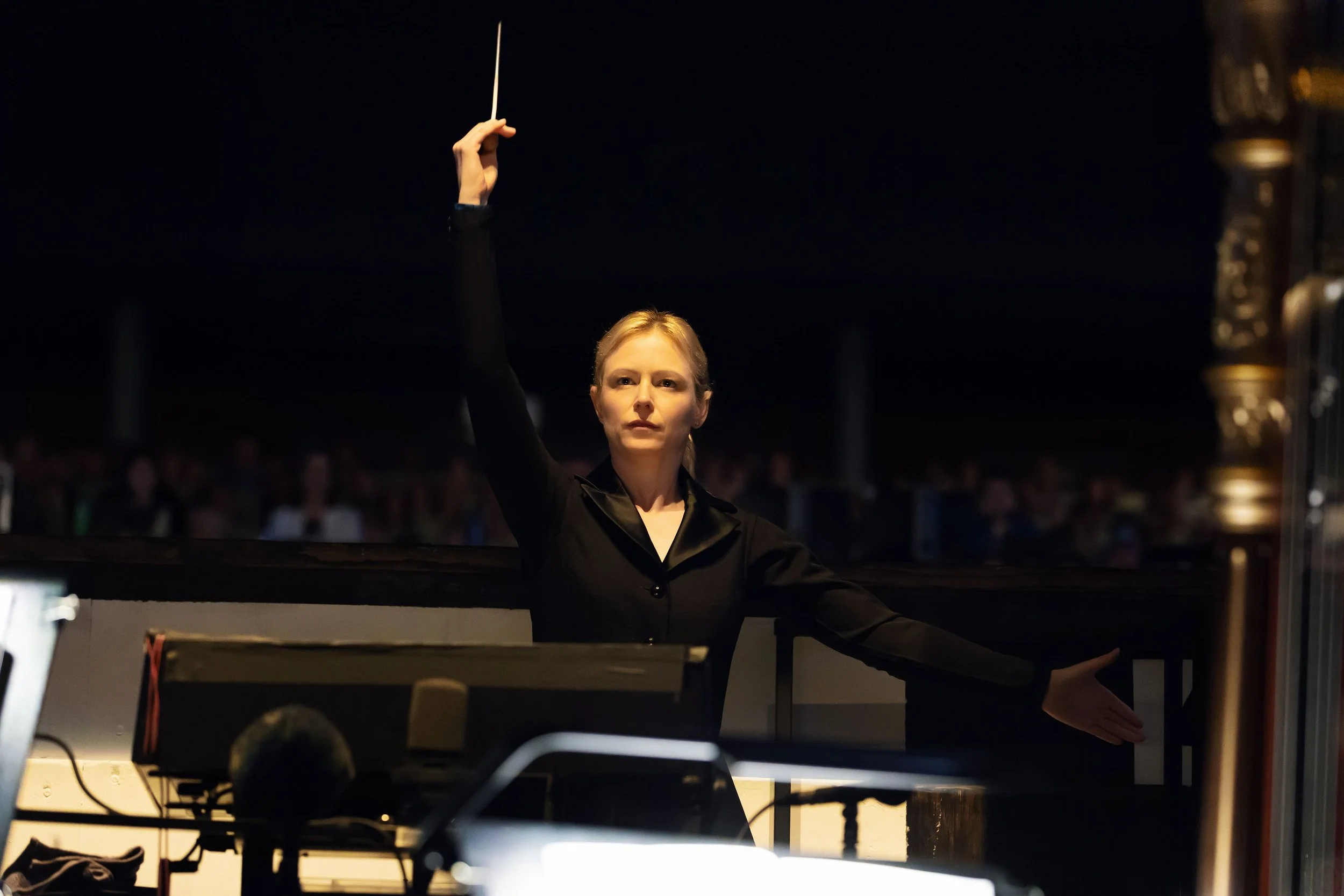Gemma New receives praise for 'The Turn of the Screw" opera production at Santa Fe Opera
Photo credit: Curtis Brown
Review: Tautly focused The Turn of the Screw creates a creepy psychological mood at Santa Fe Opera
By Harvey Steiman
Seen and Heard International
August 5, 2025
Given the gory goings-on in horror movies these days, a subtle ghost story like the Henry James novella which inspired Benjamin Britten’s Victorian-era The Turn of the Screw may not raise an audience’s hackles much. But Britten’s superbly crafted score (ripe with all the insinuation psychodrama needs) and a cast full of singing actors who work together seamlessly got the job done winningly at Santa Fe Opera.
The production, which originated at England’s Garsington Opera (like Santa Fe Opera a summer festival in a relatively remote location), fits perfectly. A series of tall windows and an arched pair of doors that open mysteriously whenever someone must enter or leave suggest a slightly off-kilter manor house. A change of furniture identifies other locations in and around the manor. A lake, which plays a major role in Act II, intrudes at a corner of the stage, but it also hints that all the paranormal activity may just be a figment of a character’s imagination.
Seen through the windows, the Santa Fe hills provided natural real-life color to Bly, the manor where an unnamed Governess has been hired by the guardian to manage two children – Miles and Flora – and the housekeeper, Mrs Grose. All goes well until the ghosts of the deceased Miss Jessel (the previous governess) and an ex-valet of questionable character, Peter Quint, become increasingly present.
Louisa Muller, an American opera director who has been busy at Garsington (she directed this opera there in 2019), created a remarkably poised and natural-feeling atmosphere for the ghost story to take apart, bit by bit, the lives of the living. Each distinct character meshed well with the others on the stage.
Soprano Jacquelyn Stucker, who has sung leading roles at the Metropolitan Opera and Chicago Lyric, shouldered the role of the Governess with enthusiasm and lithe singing that ever-so-slowly betrayed her gathering horror. Mezzo-soprano Jennifer Johnson Cano’s ‘everything is all right’ Mrs Grose created a nice balance with the sensitive Governess.
As Miles, Everett Baumgarten glowed with charm and an underlying weirdness, and he sang with a pure, refined treble. As the elder of the two children (but decidedly shorter and younger-looking than his sister), he had a lot to sing, including the recurring ‘Malo’ song that suggests he is not quite the little gentleman he seems to be. He recently sang the same role at the Spoleto Festival USA. Annie Blitz was ideal as Flora, a playful yet serious child.
The children, at least as the Governess sees it, are in thrall to Peter Quint (tenor Brenton Ryan, who also voiced the Prologue) and Miss Jessel (soprano Wendy Bryn Harmer). Ryan did not play Quint as a ghost who would cry ‘boo!’ and seemed perfectly normal until, at the end, he insisted on something horrifying. As singers, both of the ghosts were on point all evening.
New Zealander Gemma New drew out all the contours and colors that Britten’s compact thirteen-piece orchestra could provide while finding ideal balances with the singers. Words are paramount in this opera, and they came through clearly without any compromise to the music.
The experience of this 2-hour and 15-minute performance was exactly what Britten intended: disturbing psychologically and musically potent.
Read the full article here.

